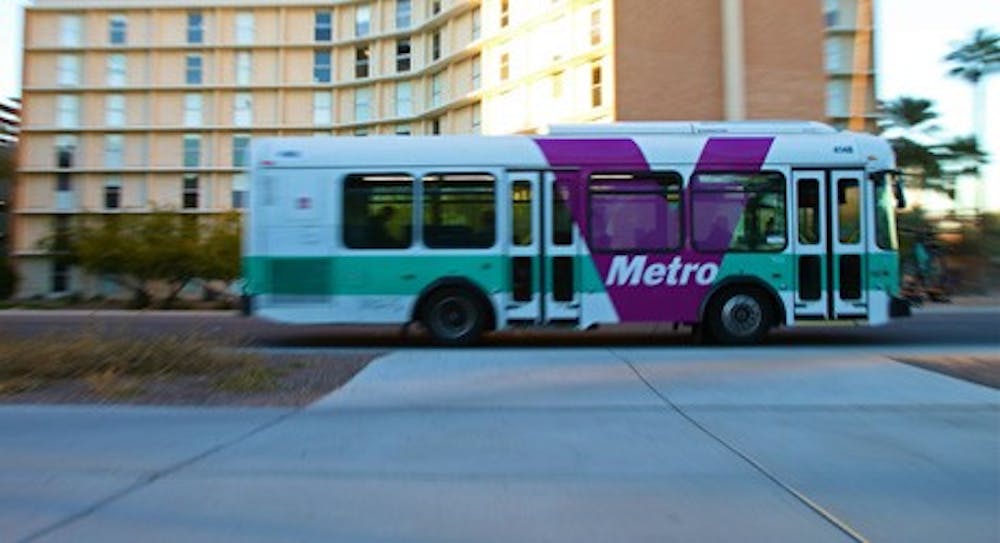The Valley Metro bus system is a vital source of transportation for many in the Phoenix area, but the faces of the riders are sometimes overlooked in the hustle and bustle of metro life.
Maria Teresa Miró, a graduate student at ASU’s Herberger Institute for Design and the Arts, created a fanzine, or fan magazine, last year to capture those faces and tell their stories.
“The Bus Project” fanzine features portraits of passengers drawn by Miró herself, accompanied by written profiles based off interviews she conducted.
The publication is ongoing and is distributed for free throughout Phoenix.
Miró’s idea for “The Bus Project” came from her frustration of not having a car after moving to the Valley from Madrid about two years ago.
To get around, Miró used the Phoenix bus system, a system she believes is rampant with dysfunction, as in most urban areas in the American Southwest.
The central focus of the fanzine is the social impact of the public bus system in the Phoenix area.
Riders of buses are not “mere users” with interchangeable values and needs, Miró said. In fact, there is nothing “mere” about them.
“They have faces, feelings and voices, personal histories and social networks, job obligations and family needs,” Miró said.
One rider featured in the fanzine is a man named Miguel, who takes the bus because he doesn’t have a car or a job. According to his profile, Miguel spends his 45-minute trips carrying his baby.
Gail, another rider featured in the fanzine, takes the bus from Tempe to her work in Scottsdale. According to her profile, having a car would cost her 40 percent of her salary.
Gail told “The Bus Project” that once people in Scottsdale hear that she takes the bus, “you go down the scale for them, because there is such a big, upper-class car culture there.”
Understanding how riders interact with the urban landscape cannot be simply reduced to “people use buses,” she said.
Small, continuous interlocking events keep the city and its public alive and in motion, Miró said. Using the bus means actively and critically engaging with an array of material and abstract entities, whether that means boarding a vehicle, paying a fare, reading a schedule or tracking time.
“Neither the substance of the city itself nor the people who live there is alone sufficient for understanding the meaning of urban social life,” Miró said. “Instead, we should work to materialize the social and socialize the material in cities.”
Piano performance sophomore Cecilia Chou said that overall, Arizona has a strong car culture, but it is less prominent in the Tempe and Phoenix area.
“With the location of ASU campuses being scattered across Tempe and Phoenix, it is often more practical to take the bus or light rail to travel between campuses or home,” Chou said.
Justice studies sophomore Aj Arvizu lives off campus and takes the bus and light rail to school.
“I personally have never felt judged when I say I take public transportation,” Arvizu said. “I actually get more praises because I am … lowering my carbon footprint, which I think everyone needs to take into consideration in their day to day activities.”
Reach the reporter at cksilves@asu.edu





